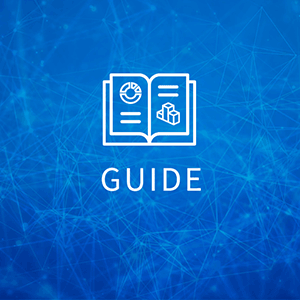The name doesn’t matter. The business impact does.
William Shakespeare hadn’t conceived of the challenges of IT in the 21st century. But he had an uncanny ability to deliver valid insights into the heart of a matter. “A rose by any other name would smell as sweet,” he wrote in Romeo and Juliet. That lesson applies today when it comes to naming emerging technology categories: the name isn’t important as the business impact it delivers.
How can you get an accurate, complete view of your IT estate—across cloud, SaaS, and on-prem? That question is central to the needs of CIOs and IT leaders, particularly while they adapt to changes that are accelerating in response to COVID-19.
As organizational leaders try to gather accurate and actionable information, enterprises and analysts are increasingly looking for fitting names to describe the new category of products that provide comprehensive insights into complex IT estates. Among the new names being discussed include Technology Value Optimization (TVO), Hybrid Digital Infrastructure Management (HDIM) and Digital Platform Conductor (DPC). Regardless of the term, the business impact goal is the same. Let’s take a look at the need and how it’s being met.
Leaders struggle to gather insights that support their goals
I&O leaders today invest substantially in tools, including IT Service Management (ITSM), IT Financial Management (ITFM), IT Operations Management (ITOM) and others. Yet, these tools work in silos with inconsistent data and orchestration between them, making it difficult to strategically manage costs and risks. Decision speed and decision fidelity suffer because IT is functioning in operational silos as environments become increasingly complex.
A few examples:
- Businesses are focused on the business view of technology, not the IT view: Business leadership wants context to make business decisions faster and better. For example, they don’t just want to know what an application costs. They want to know usage data, business service information that allows them to see the business value of that application, the cost of that application, end-of-life data, security risks and more.
- Accurate IT data builds trust: The aspirations for accurate IT data have been well documented for more than a decade, but CMDBs haven’t lived up to the business promise. ITSM tools have limited data quality; ITFM tools are fed information from the general ledger. Both these types of solutions limit the accurate, timely, contextual IT data needed to make the fastest, best business decisions. (For a more detailed discussion, watch this webinar with Forrester’s Charlie Betz: Beyond CMDB: Insightful Data Direction for Technology Management).
- Accurate IT data supports agility: Research by McKinsey and the Harvard Business School found that companies that had launched agile transformations pre-COVID-19 performed better and moved faster post-COVID-19 than those that had not. Agile organizations had an edge because they already had processes and structures available to them, such as cross-functional teams, quarterly business reviews, empowered frontline teams, and clear data on outputs and outcomes, that proved critical to adapting to the COVID-19 crisis.
- The most effective CIOs and IT leaders have a seat at the table: Trust is essential for building stakeholder confidence. CIOs need strategies to develop the trust required to be successful leaders in their enterprises’ digital business transformation with CEOs, CFOs, business unit executives and other key leadership. See well-known CTO thought leader, Keith Townsend, discuss the importance of CIOs having a seat at the table with Flexera CIO Conal Gallagher.
The data and decision speed challenge is consistent with the findings in our Flexera 2021 State of Tech Spend report. I&O leaders don’t have good quality data to make decisions, resulting in slow decision-making processes and difficulty building consensus (with stakeholders and executives). This isn’t surprising as different teams typically manage on-premises, SaaS and cloud technologies. These silos result in operational thinking versus seizing strategic opportunities around digital transformation, modernization and resource optimization.
Remove the barriers
Flexera One’s customers are breaking down the silos. CIOs want to go well beyond the CMDB; they want better data to provide more powerful insights to CFOs, CEOs and the board. CFOs want information that goes beyond the general ledger or ITFM tools; they want information that helps business units make more impactful decisions that increase revenue. Flexera One’s customers believe that it’s uniquely suited to satisfy the value proposition of tools—regardless of whether they’re labeled as DPC, HDIM or TVO—because of our capabilities managing hybrid infrastructure, including IT visibility, business service mapping, orchestration and cost optimization capabilities:
Technology Value Optimization
Reallocate spend. Reduce the risk of audits and security breaches. And chart the most effective path to the cloud. Get the most from every IT dollar.
- Discovery and normalization across hybrid environments: The foundation of Flexera One is IT Visibility (powered by Technopedia) across on-prem, SaaS and the cloud. IT Visibility can discover technology whether it’s running in on-premises, SaaS, cloud or container environments. Most importantly, IT Visibility normalizes IT data from multiple technologies, allowing you to leverage and calibrate the information collected from existing inventory, security and monitoring agents. IT Visibility feeds normalized, curated and enriched IT data to HDIM tools so you have a consistent dataset to drive decisions.
- Business service mapping: Flexera One Business Service Mapping provides the missing ingredient IT leaders need to make decisions from the top-down perspective of the technology that is driving value for the business. Business Service Mapping enables you to view IT as it relates to the business functions it supports. It’s one thing for a server to be end-of-life; it is a completely different consideration if that server is supporting your online ordering or payroll system. Business Service Mapping enables IT to strategically plan digital transformation efforts and is imperative for full business impact assessments associated with daily risks such as security vulnerabilities and end-of-life technology.
- Insight to action with policies: Flexera One’s powerful policy engine enables orchestration required to respond to changes in dynamic environments with your existing tools. Policies can be used for programmatic cost-optimization efforts, such as turning off cloud instances not in use or reclaiming inactive Salesforce.com licenses. Policies can also conduct action across HDIM tools, for example, opening service tickets when hardware goes end-of-life or triggering actions within infrastructure automation tools like Chef or Puppet when a set of conditions occur.
- Hybrid IT cost optimization: As your environment gets more complex, it can also get more costly if you’re not proactively optimizing costs while resources are being utilized. Flexera specializes in optimizing contracts (based on actual usage) with strategic providers like Microsoft, Oracle, SAP, IBM whose offerings span on-prem, SaaS and cloud. Flexera One Cloud Migration capabilities enable you to move the right workloads to the most cost- effective cloud. Once you migrate workloads to the cloud, Cloud Cost Optimization enables you to continually optimize the costs of running those workloads in AWS, Azure, Google and others.
One thing’s for certain: it all starts with a solid foundation of data. Despite the increasing spend in ServiceNow, Apptio, and other tools, most IT leaders struggle with knowing what resources comprise their hybrid environment, so they can make informed decisions about how to improve the value of it.
Ultimately, the name—DPC, HDIM, TVO—won’t matter as much as the functionality and results. Regardless of what companies end up calling the foundational capability to help optimize technology in complex environments, the need is real and the payoff is valuable.
Learn more about Flexera One.







